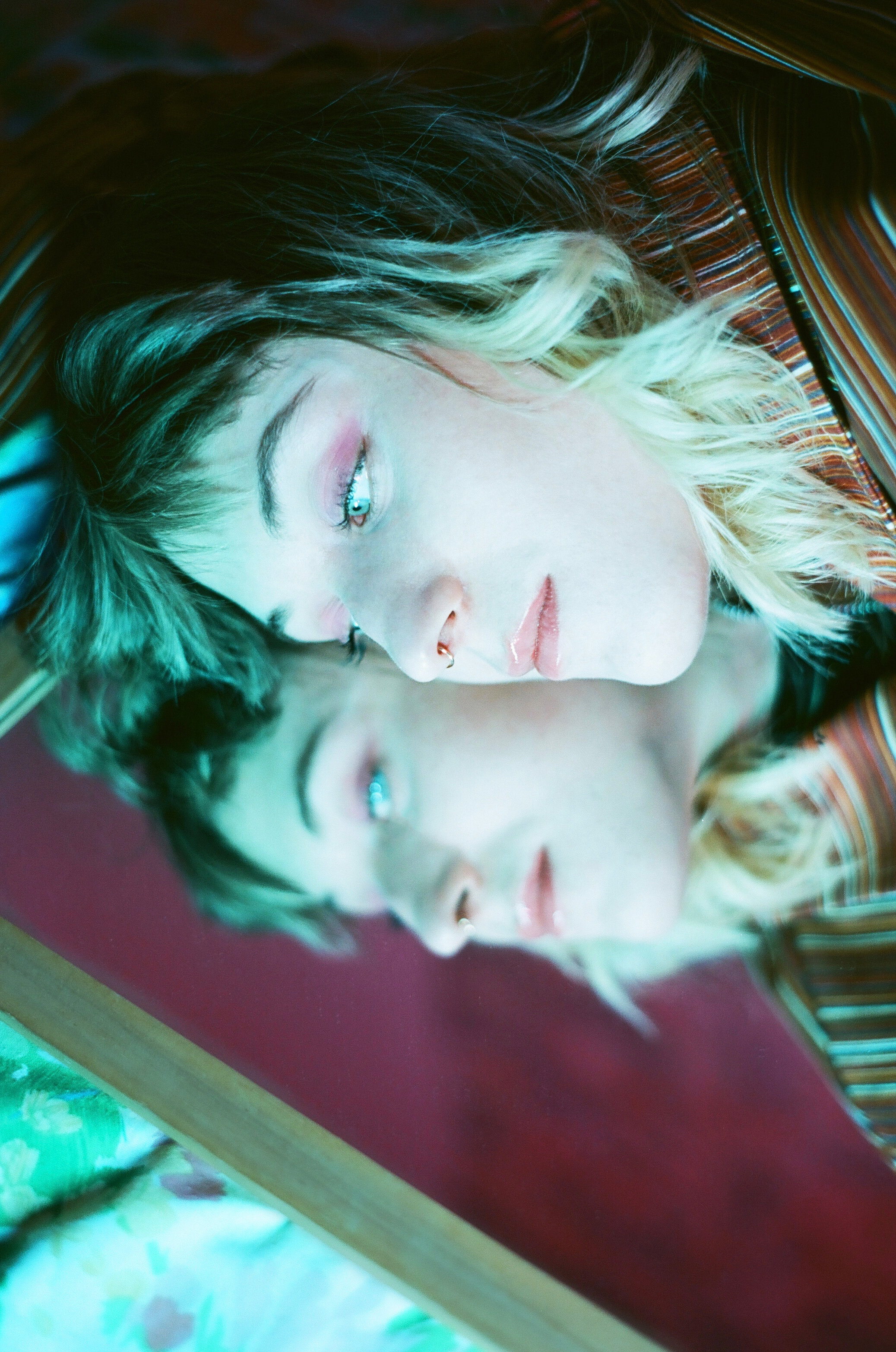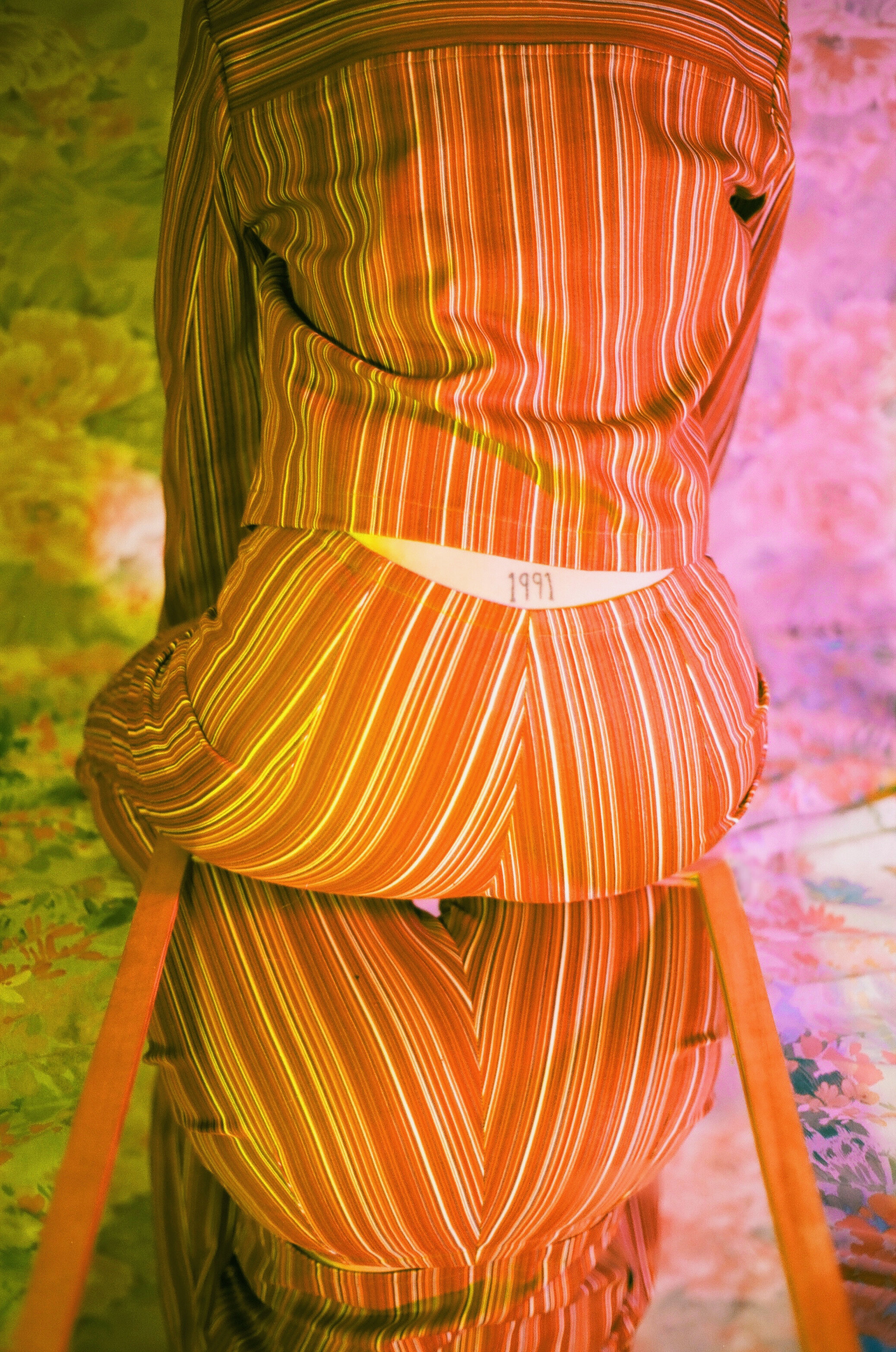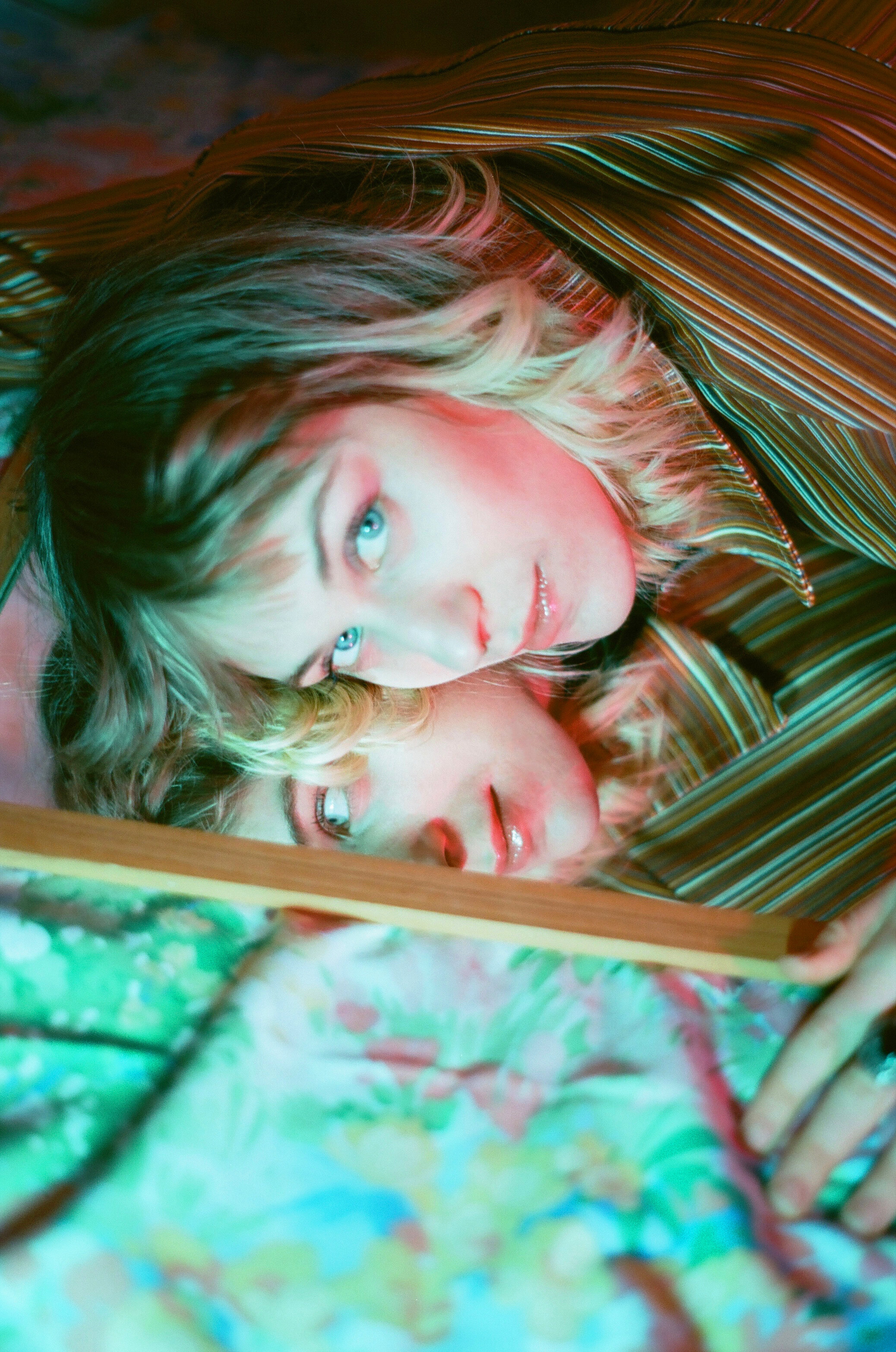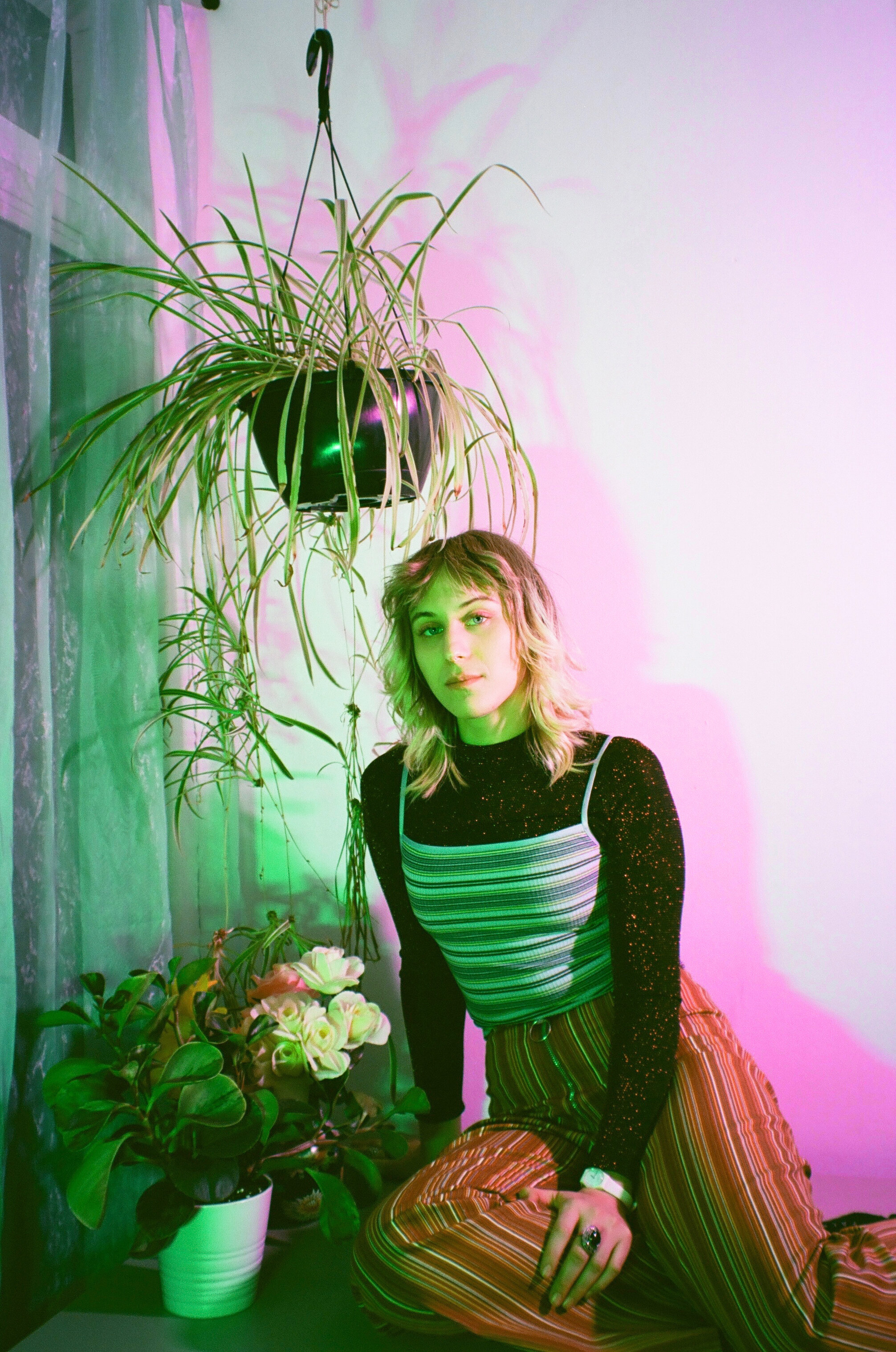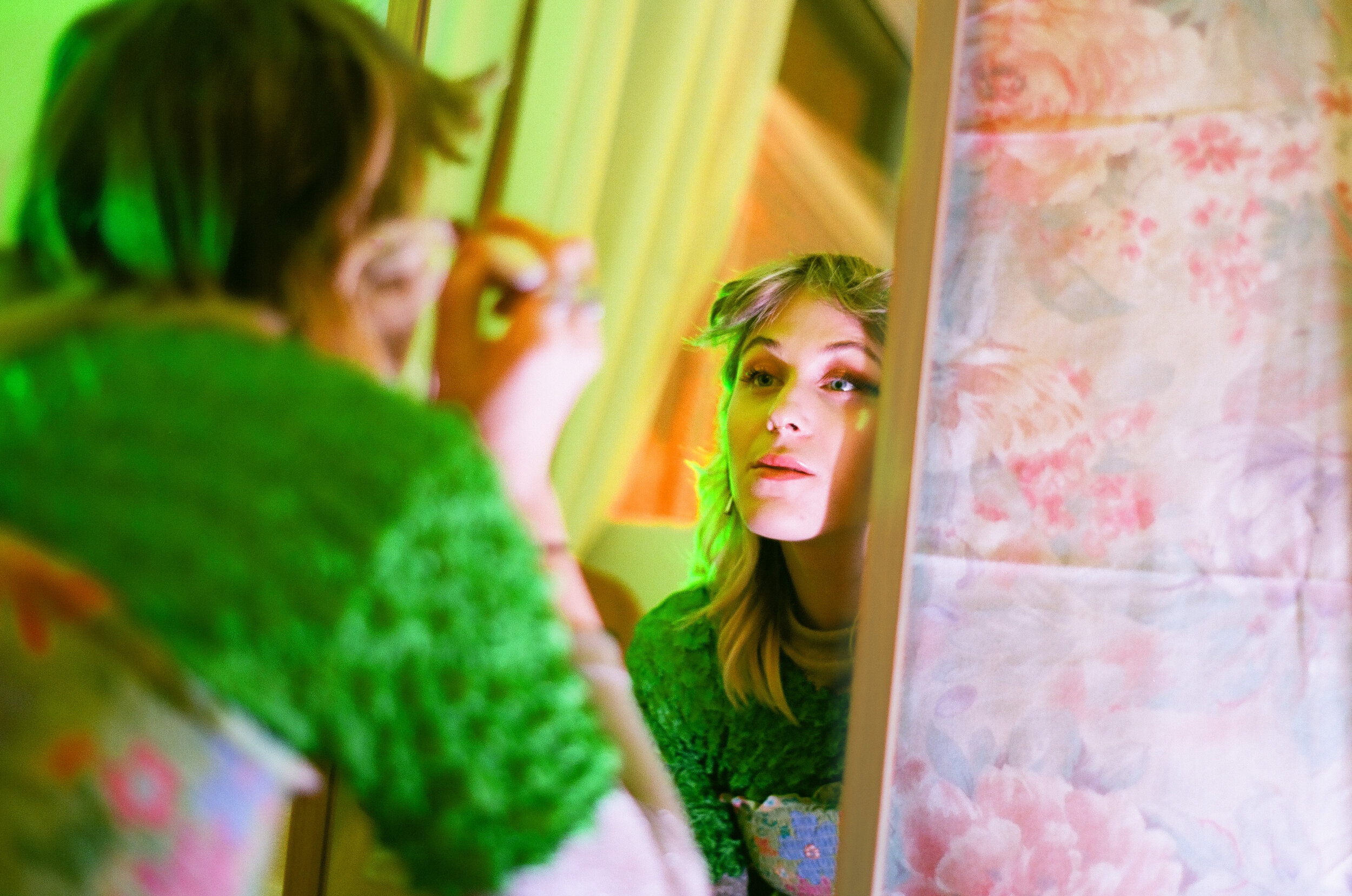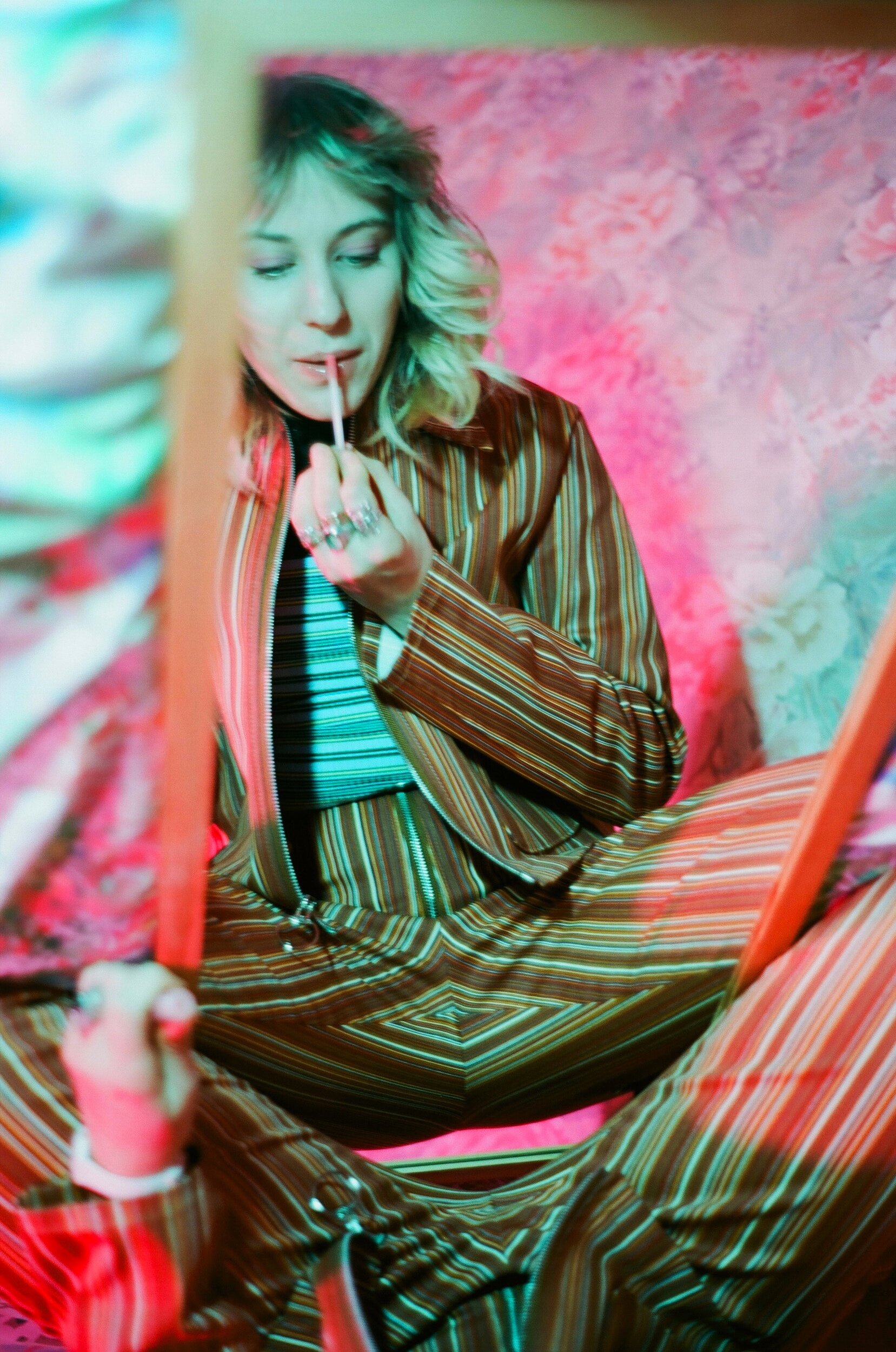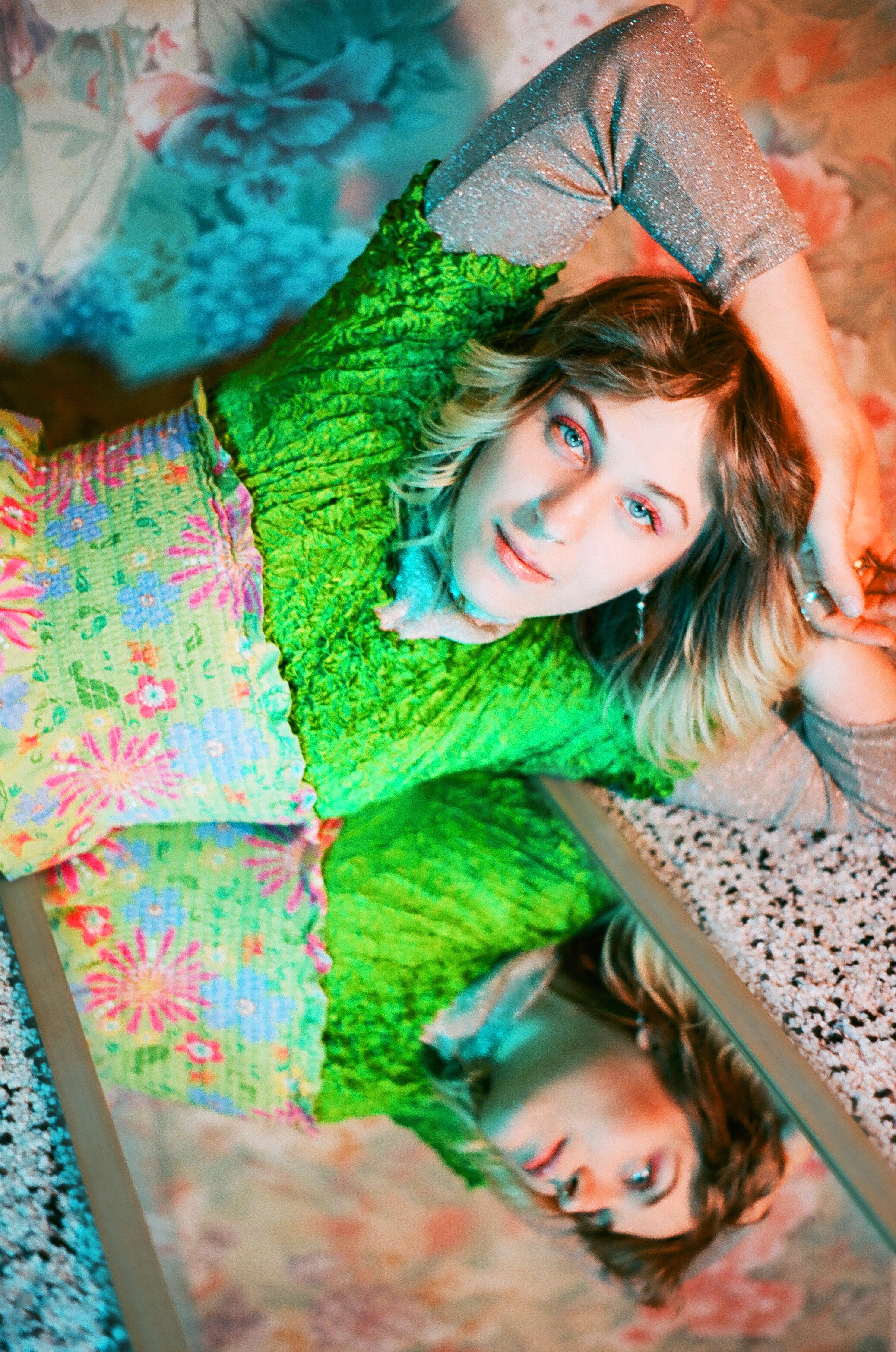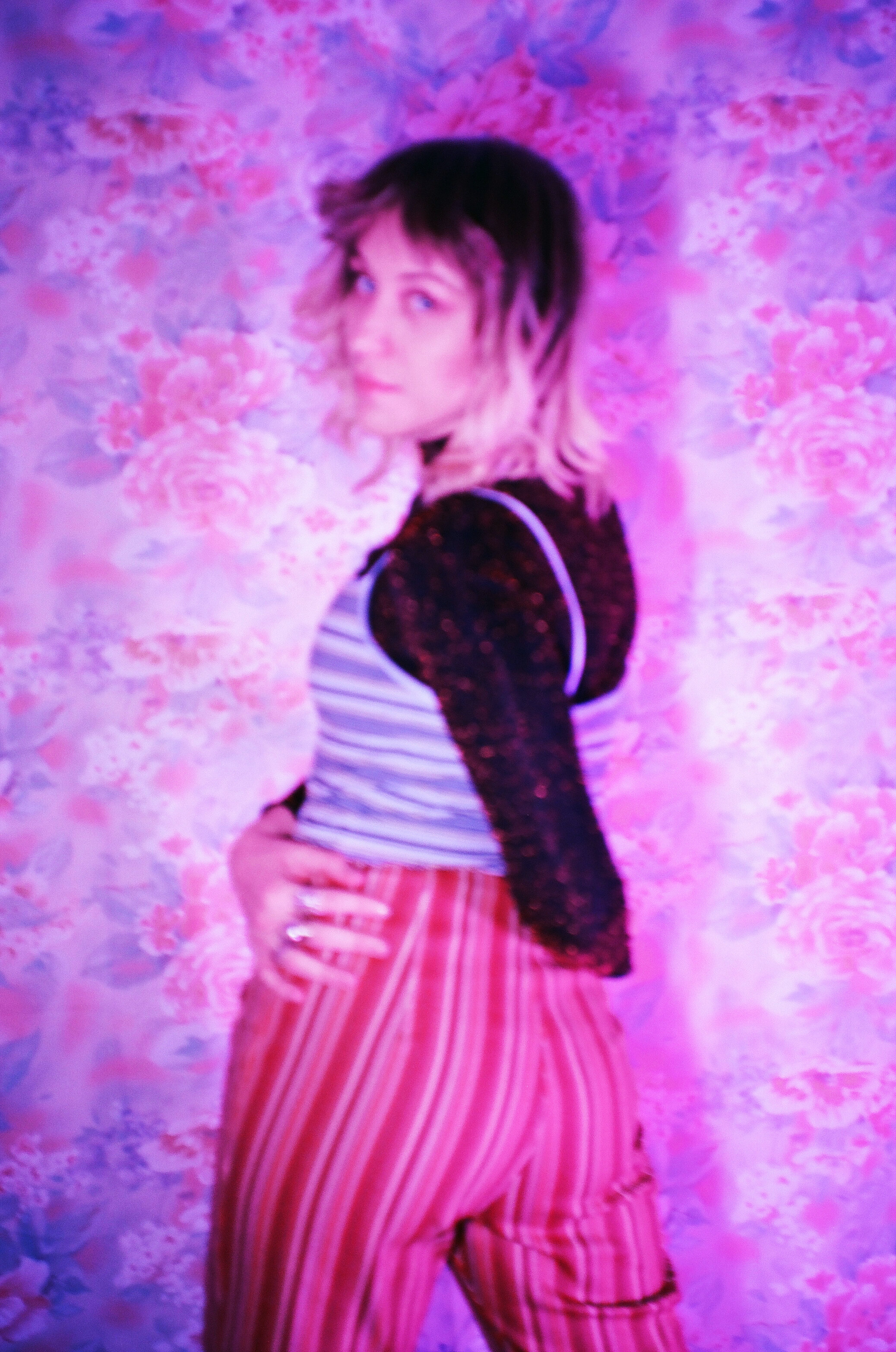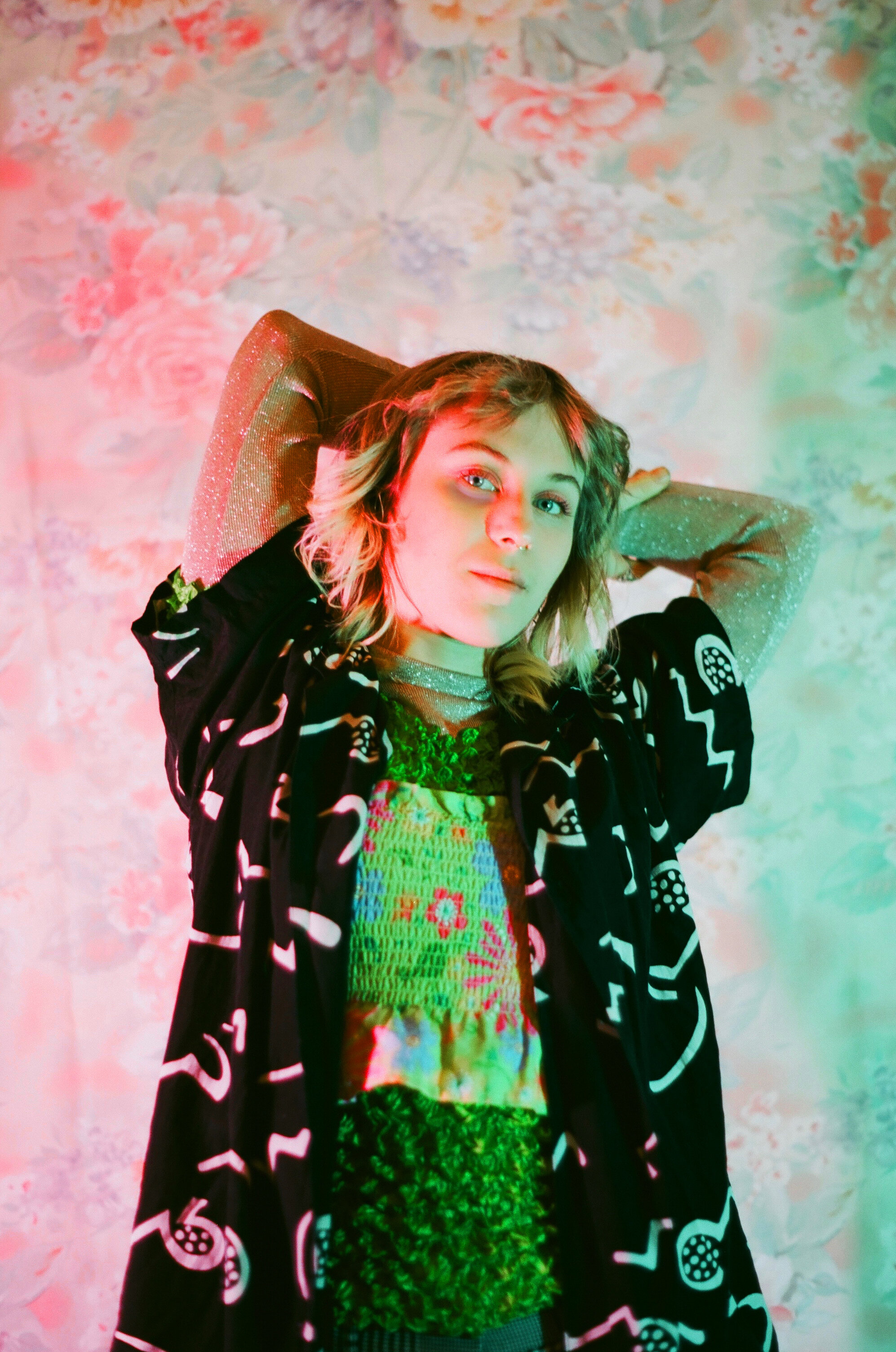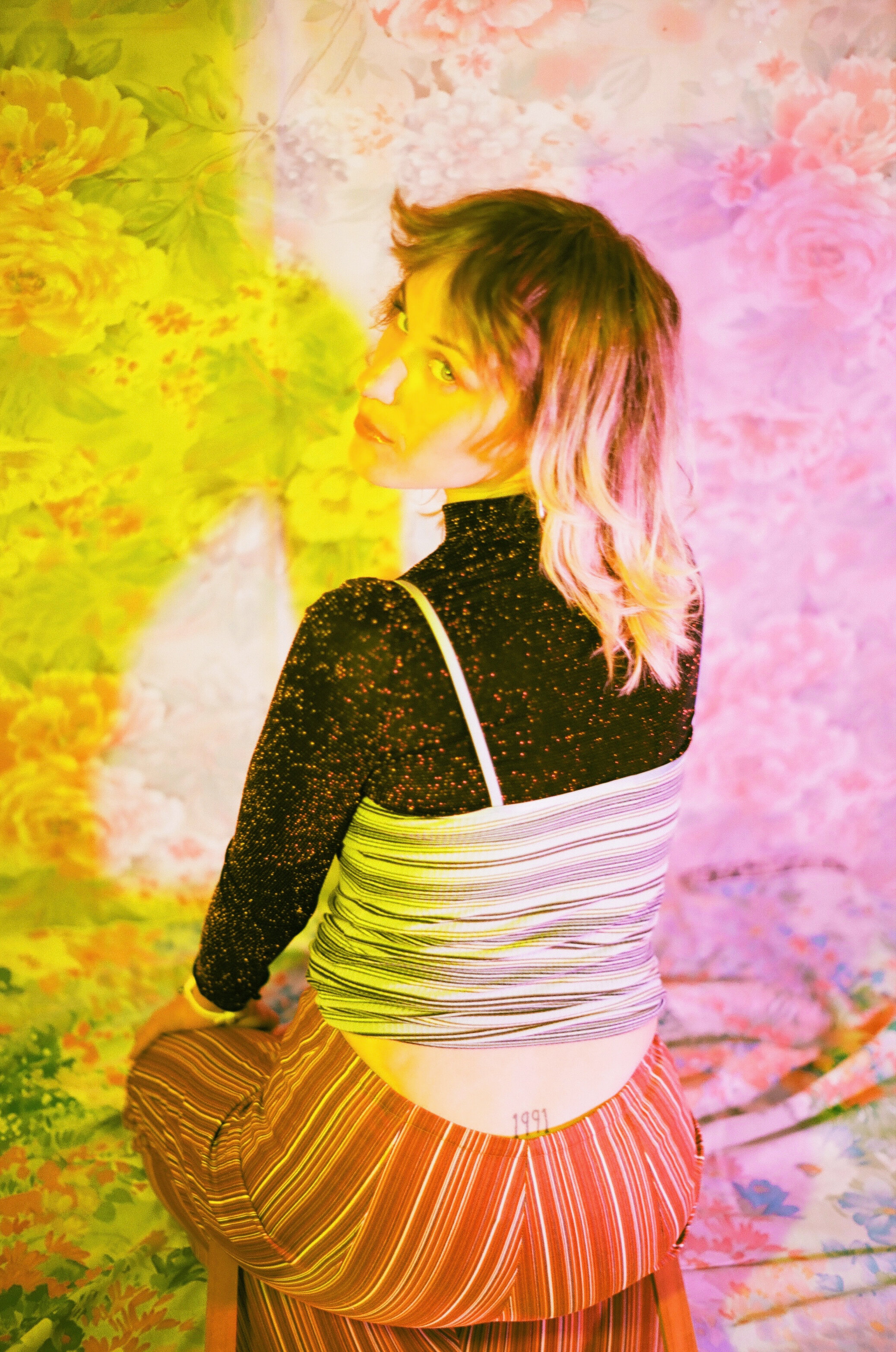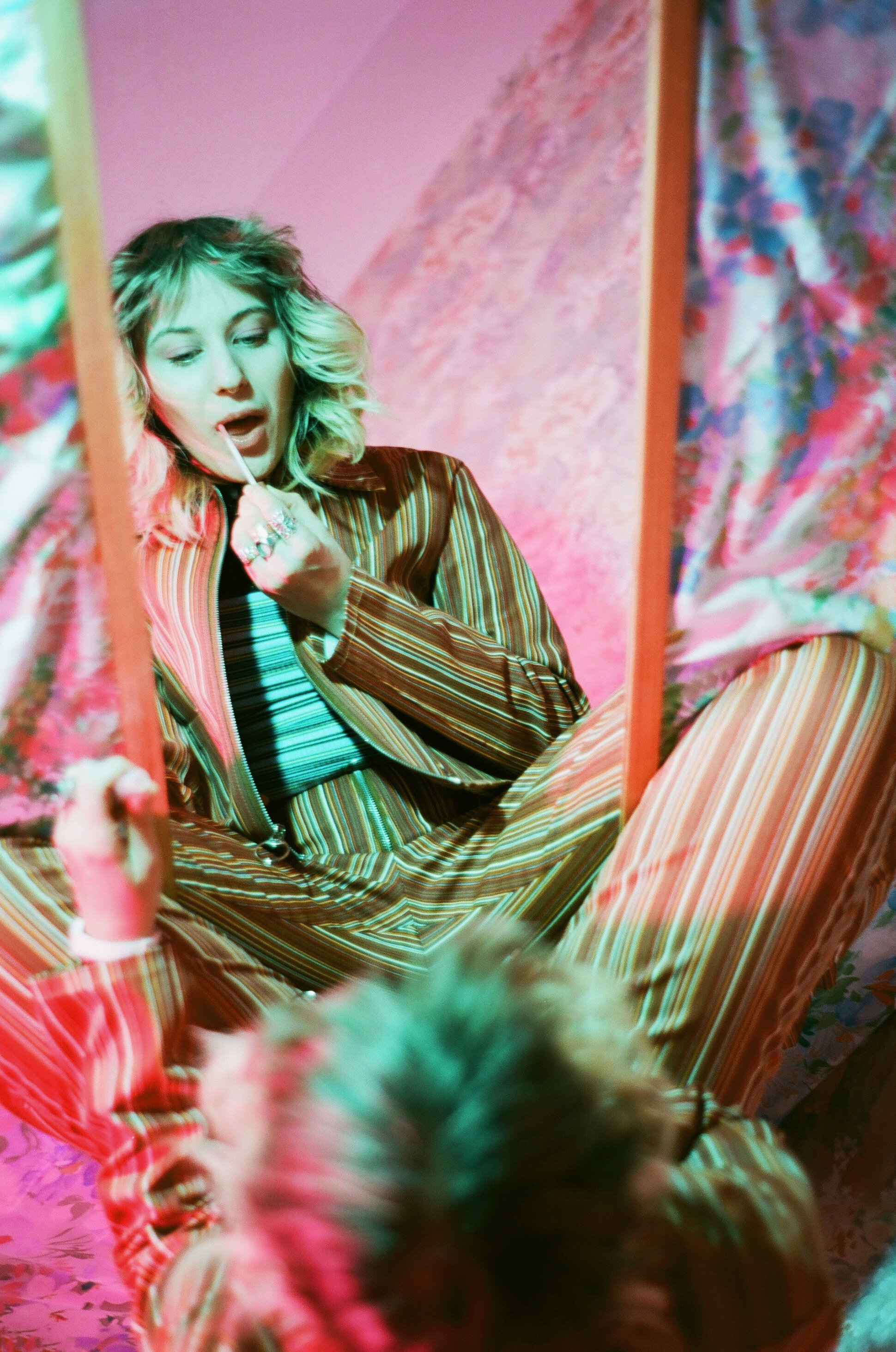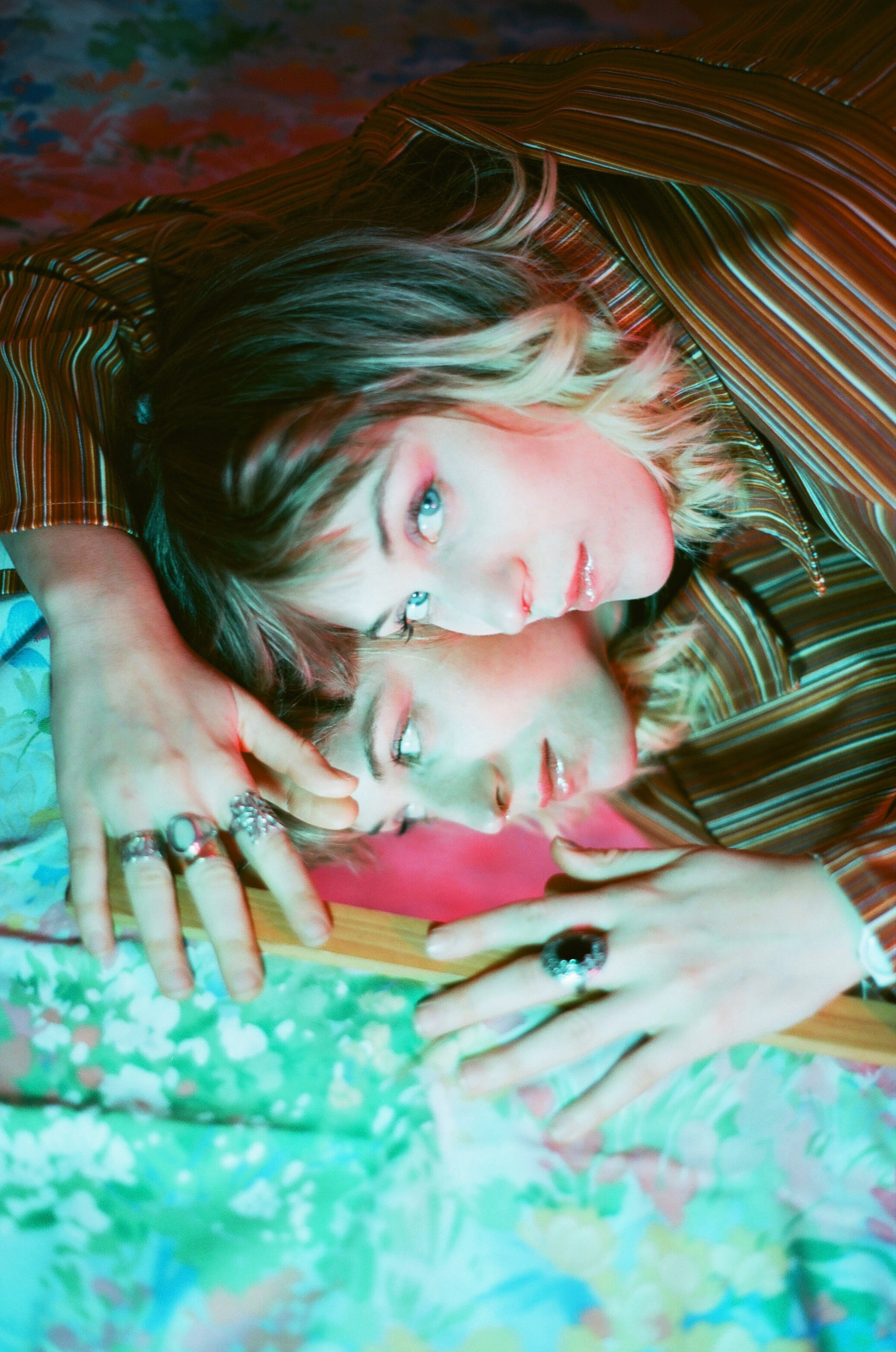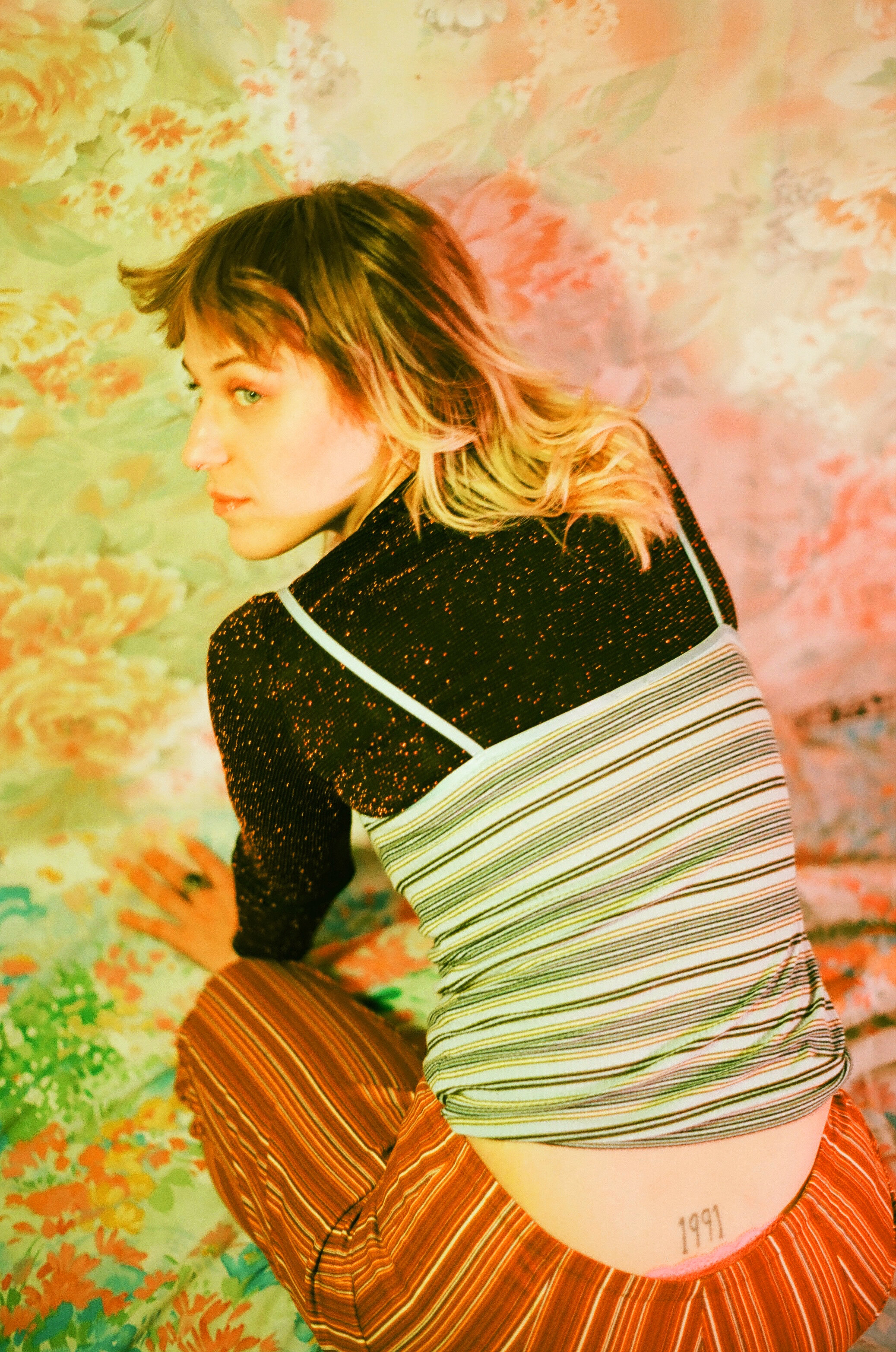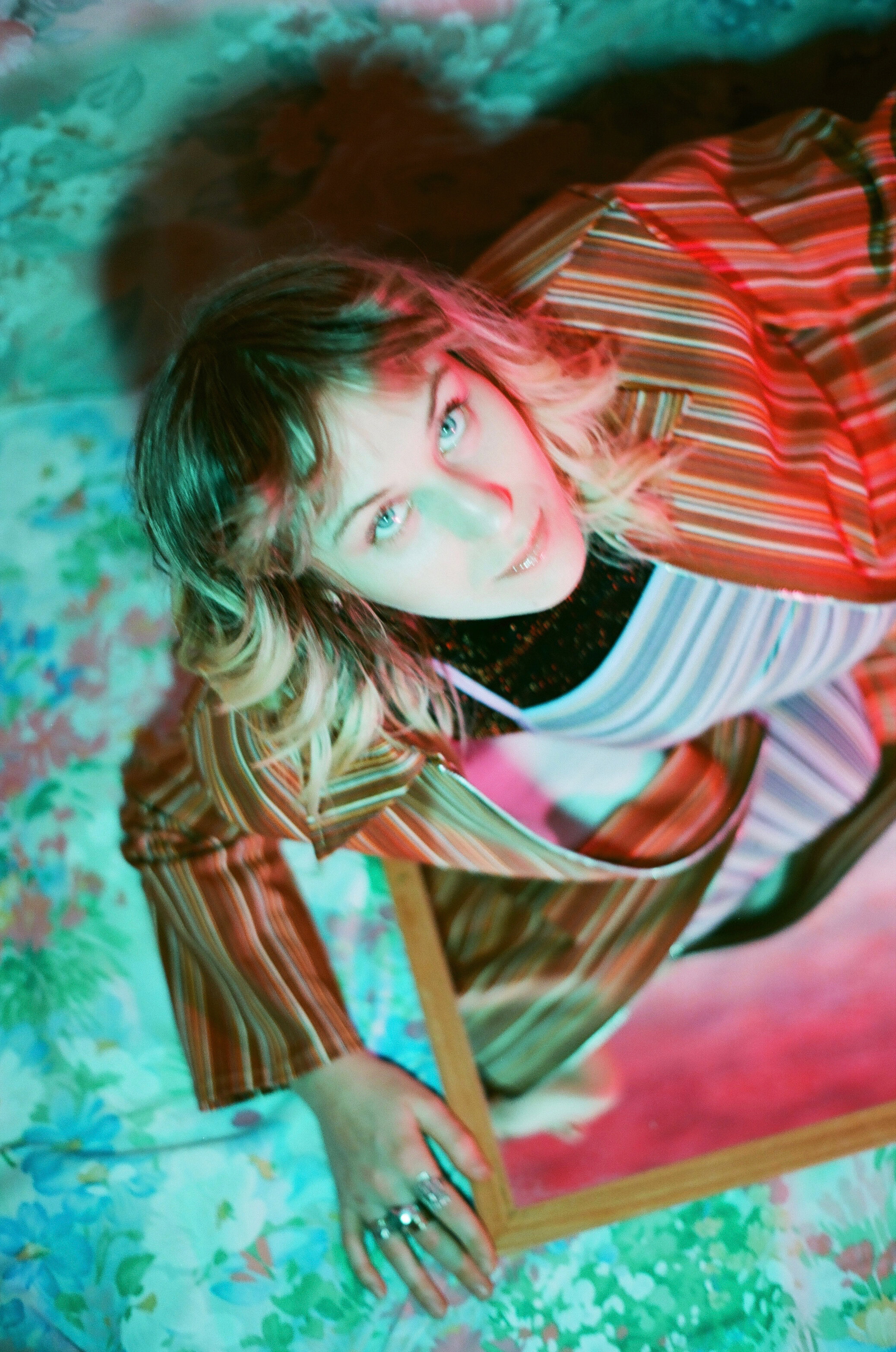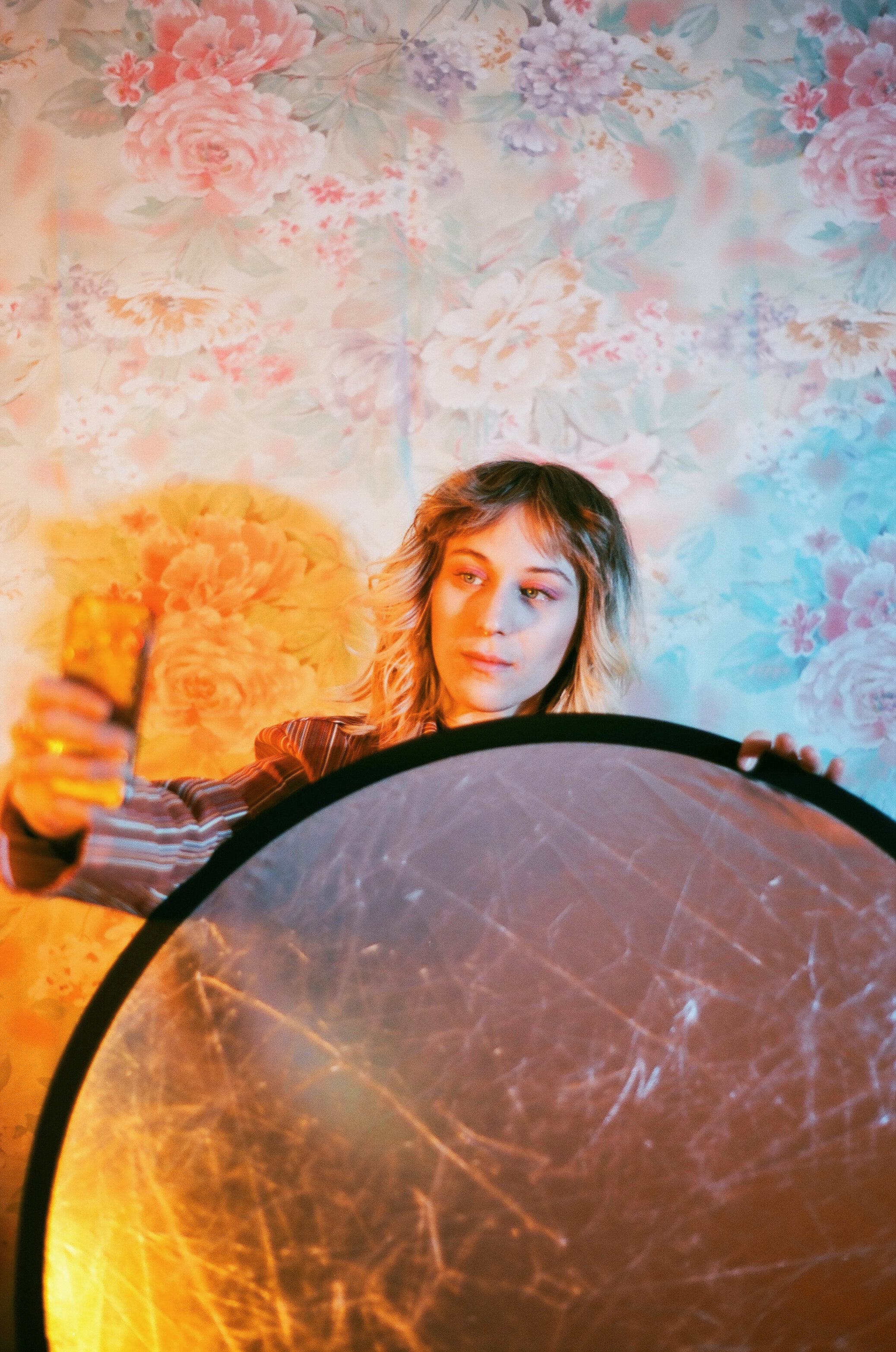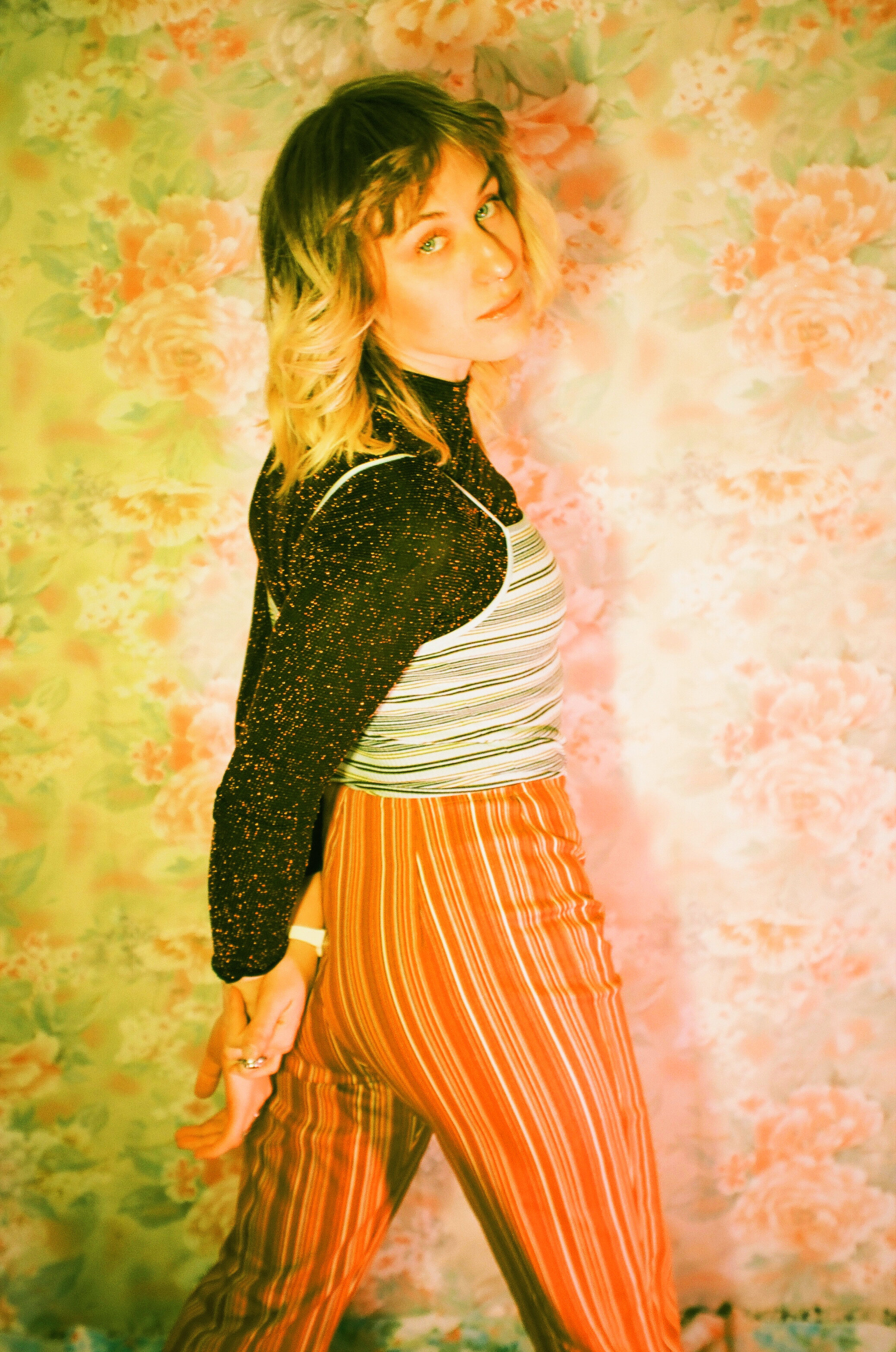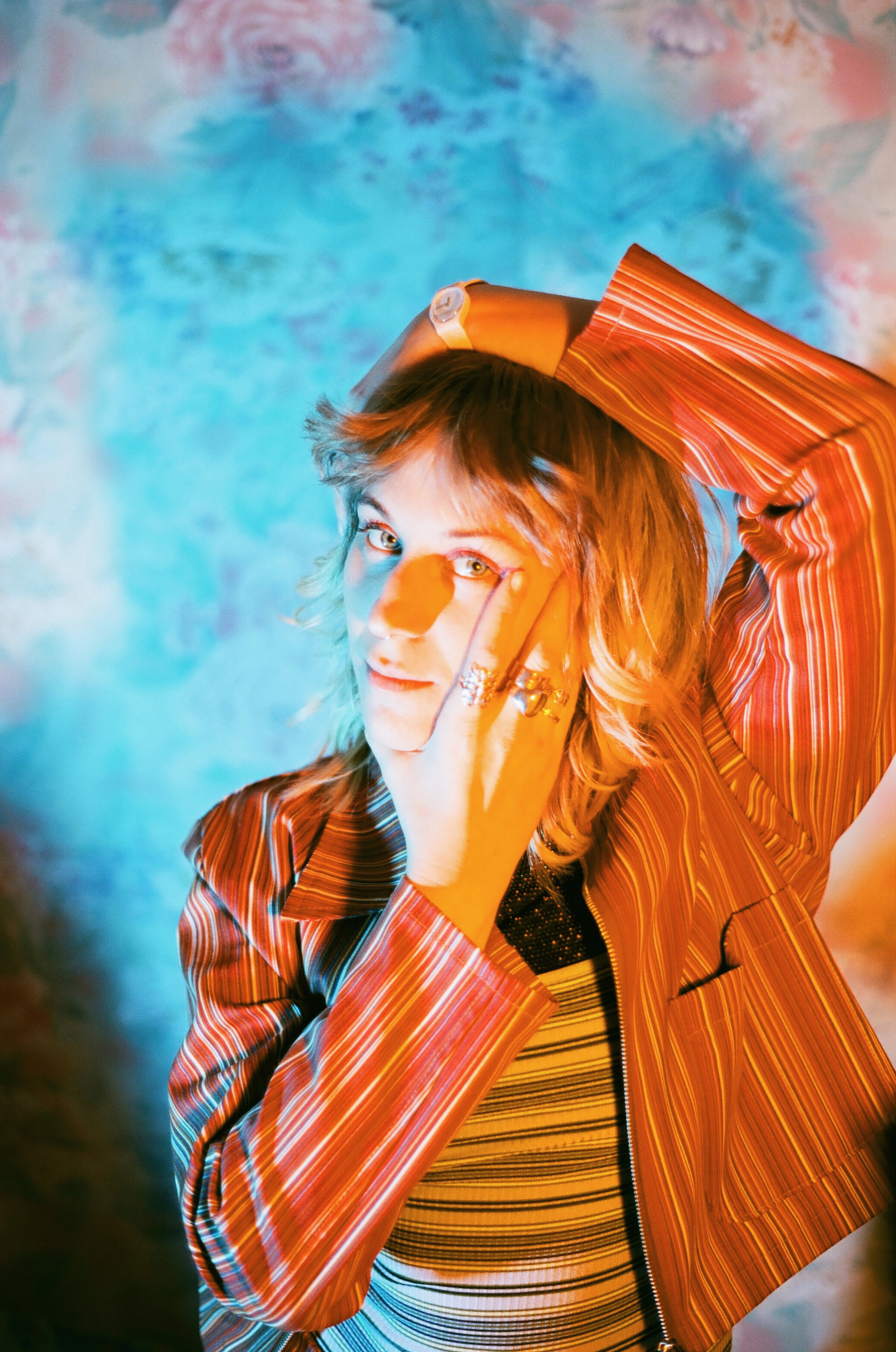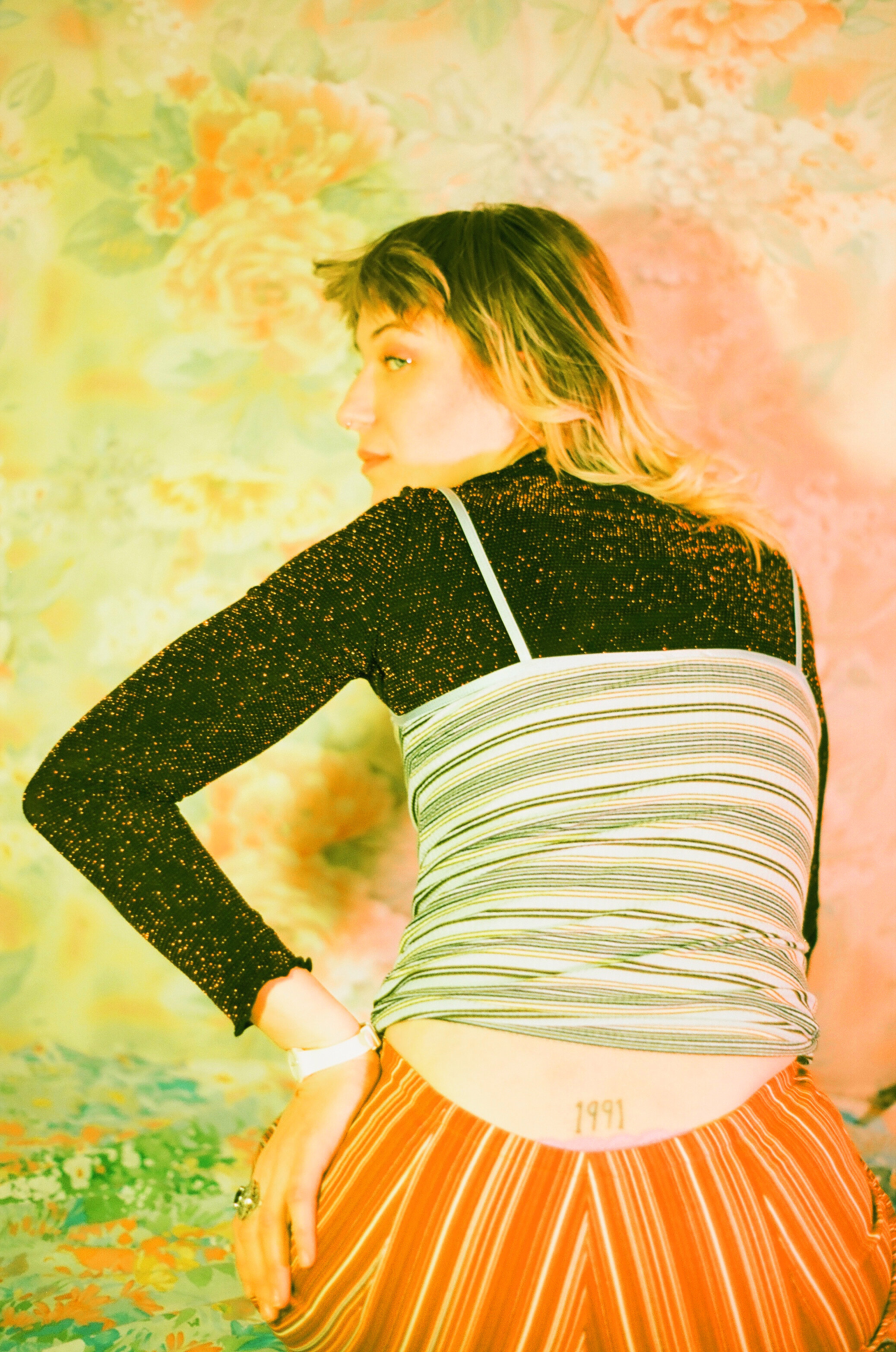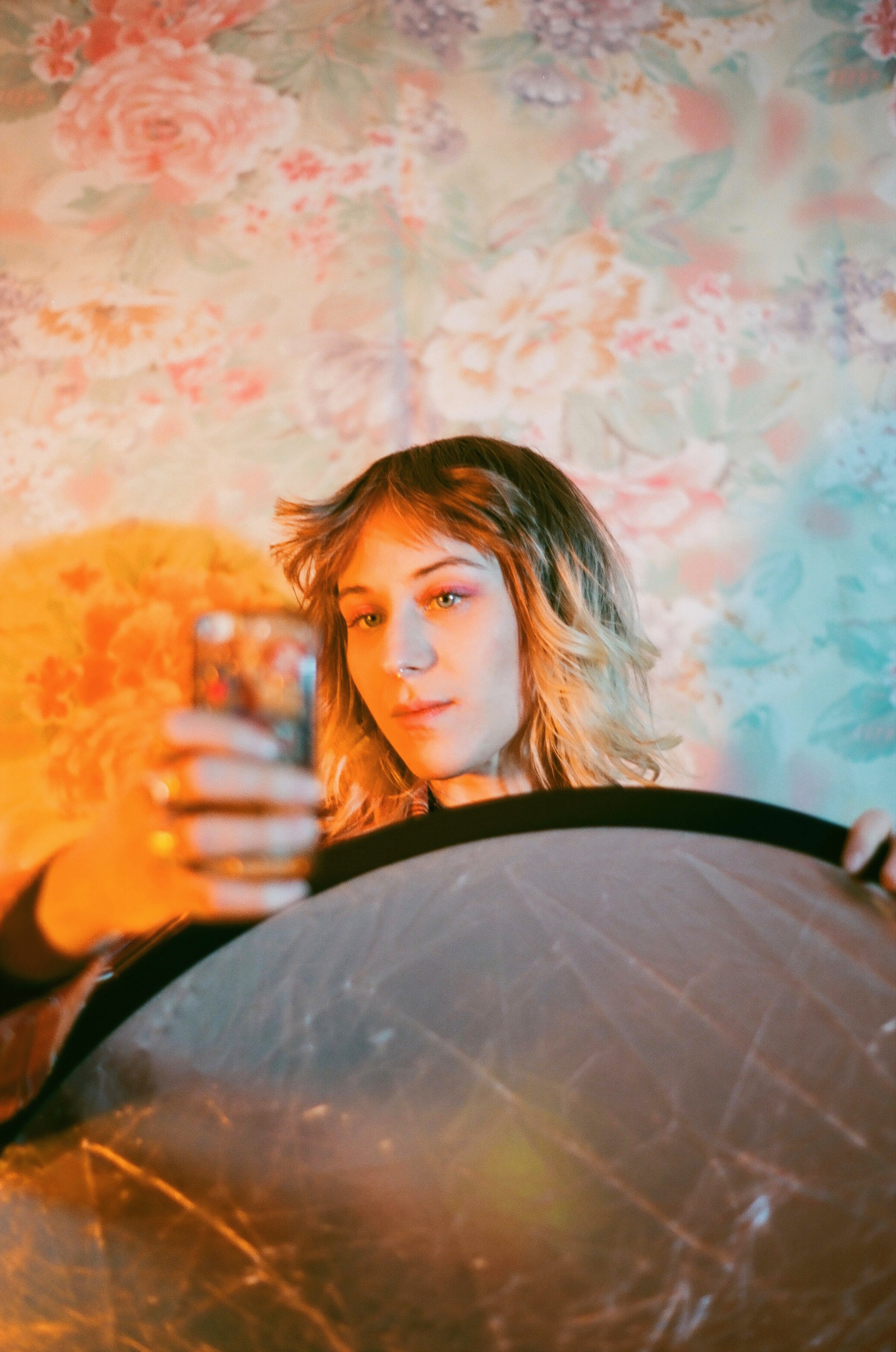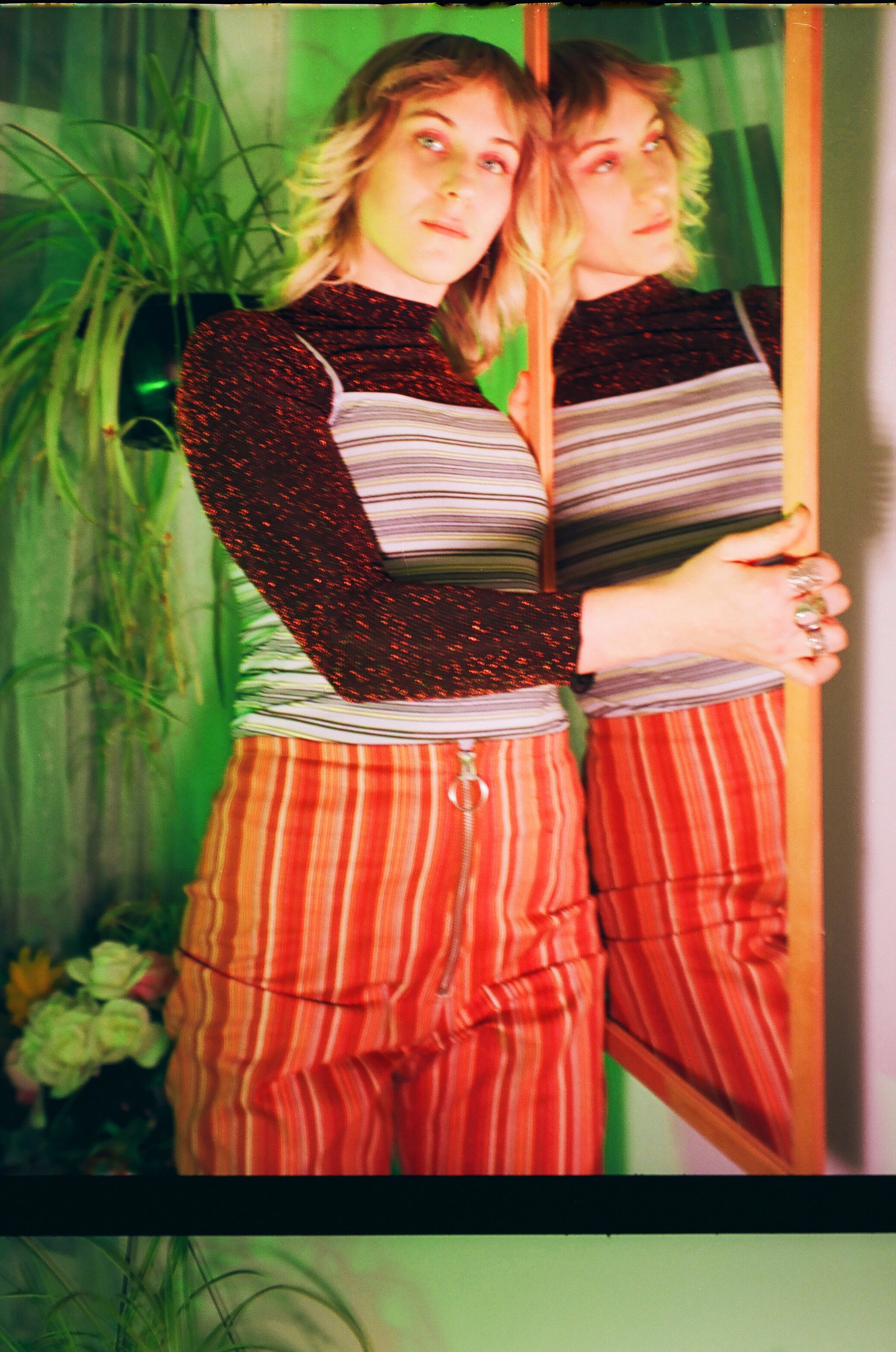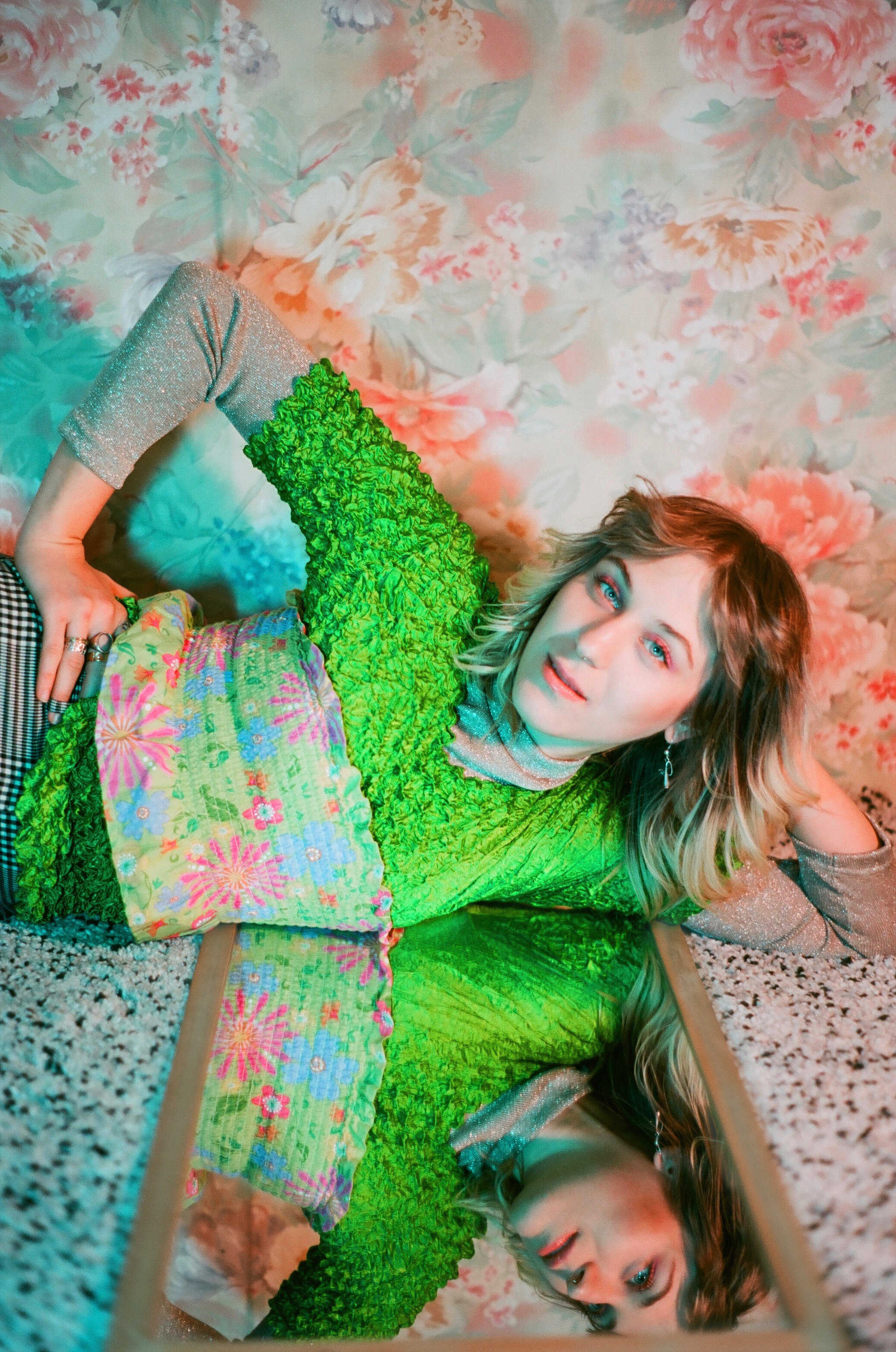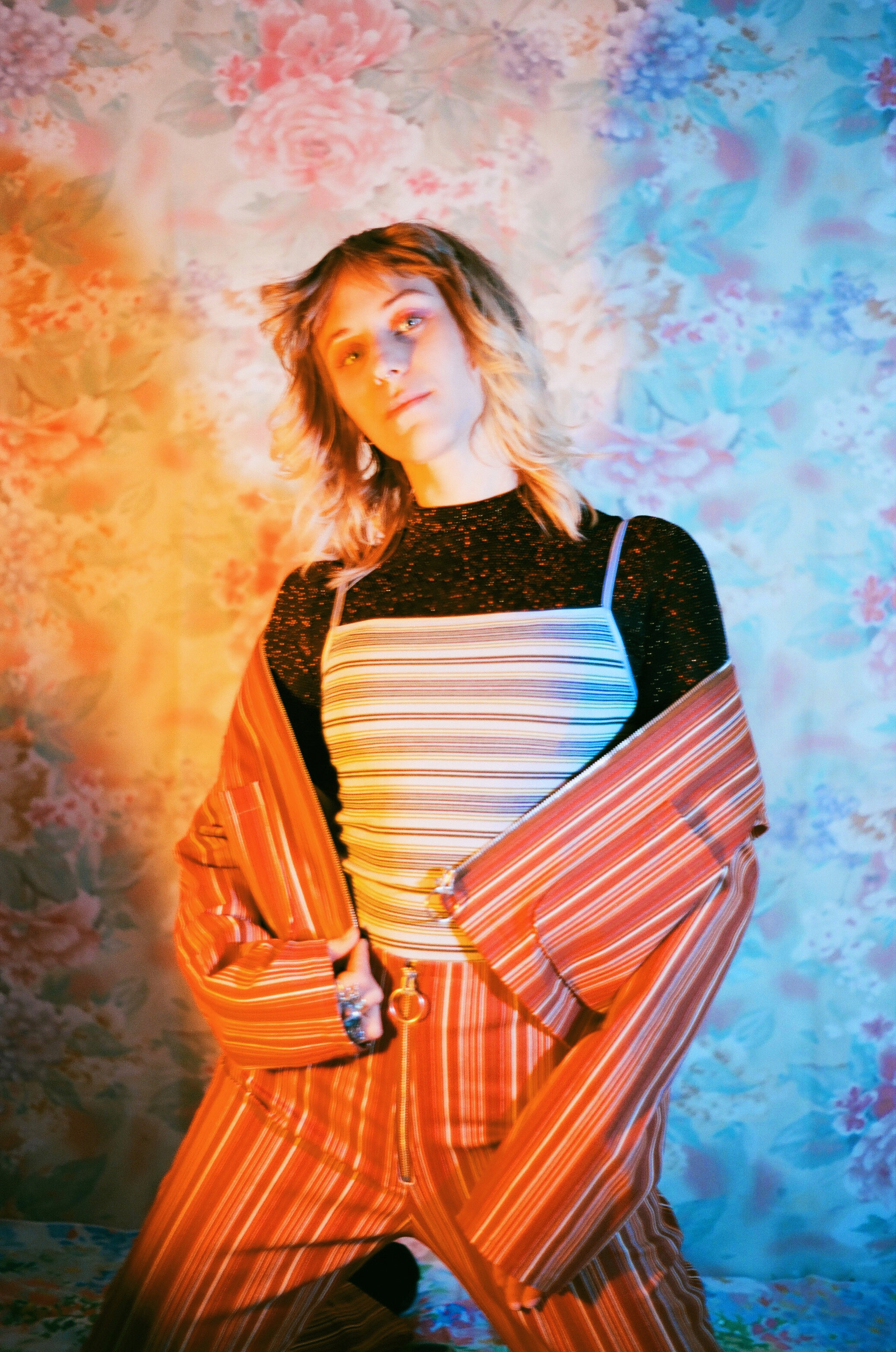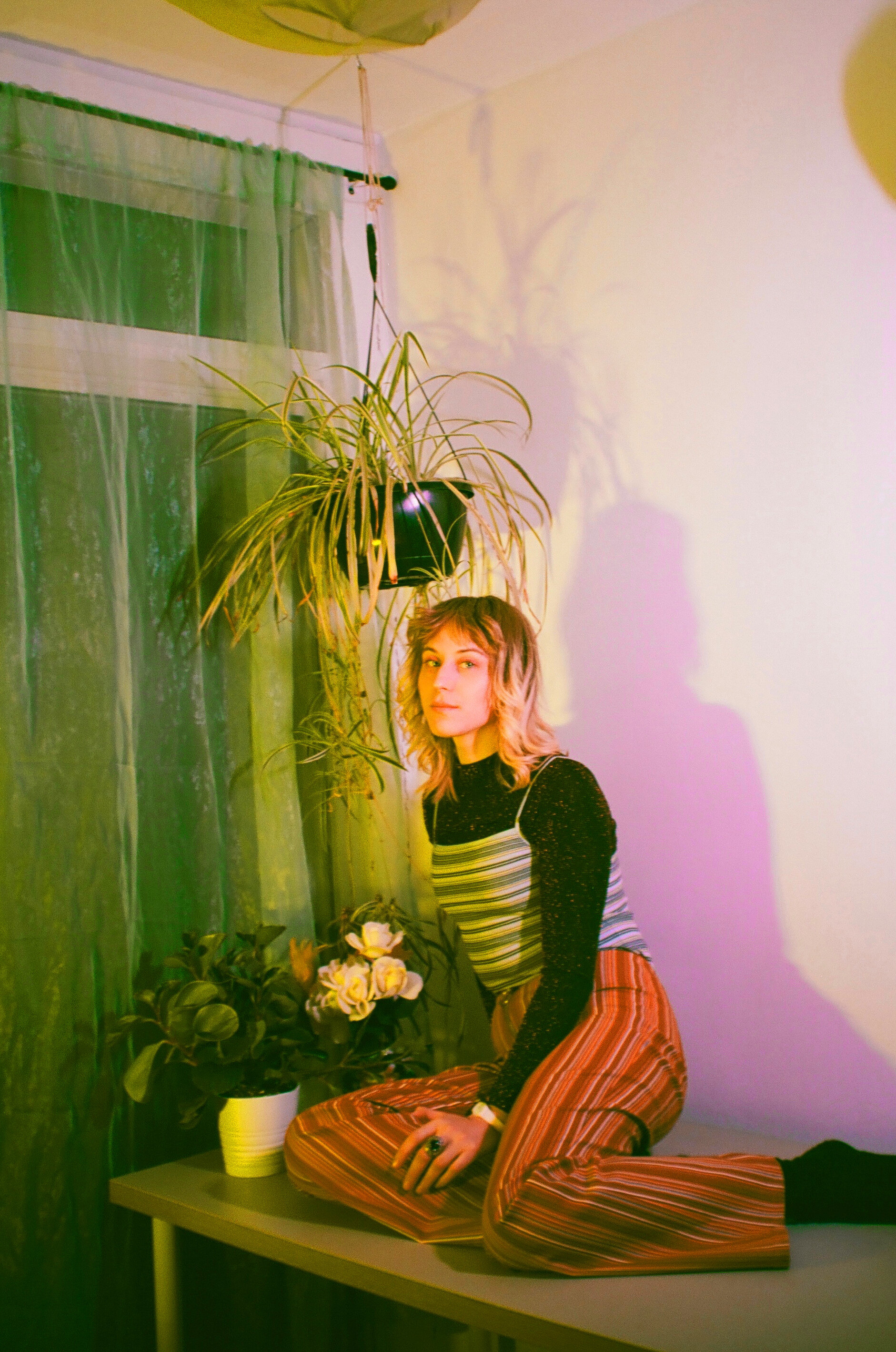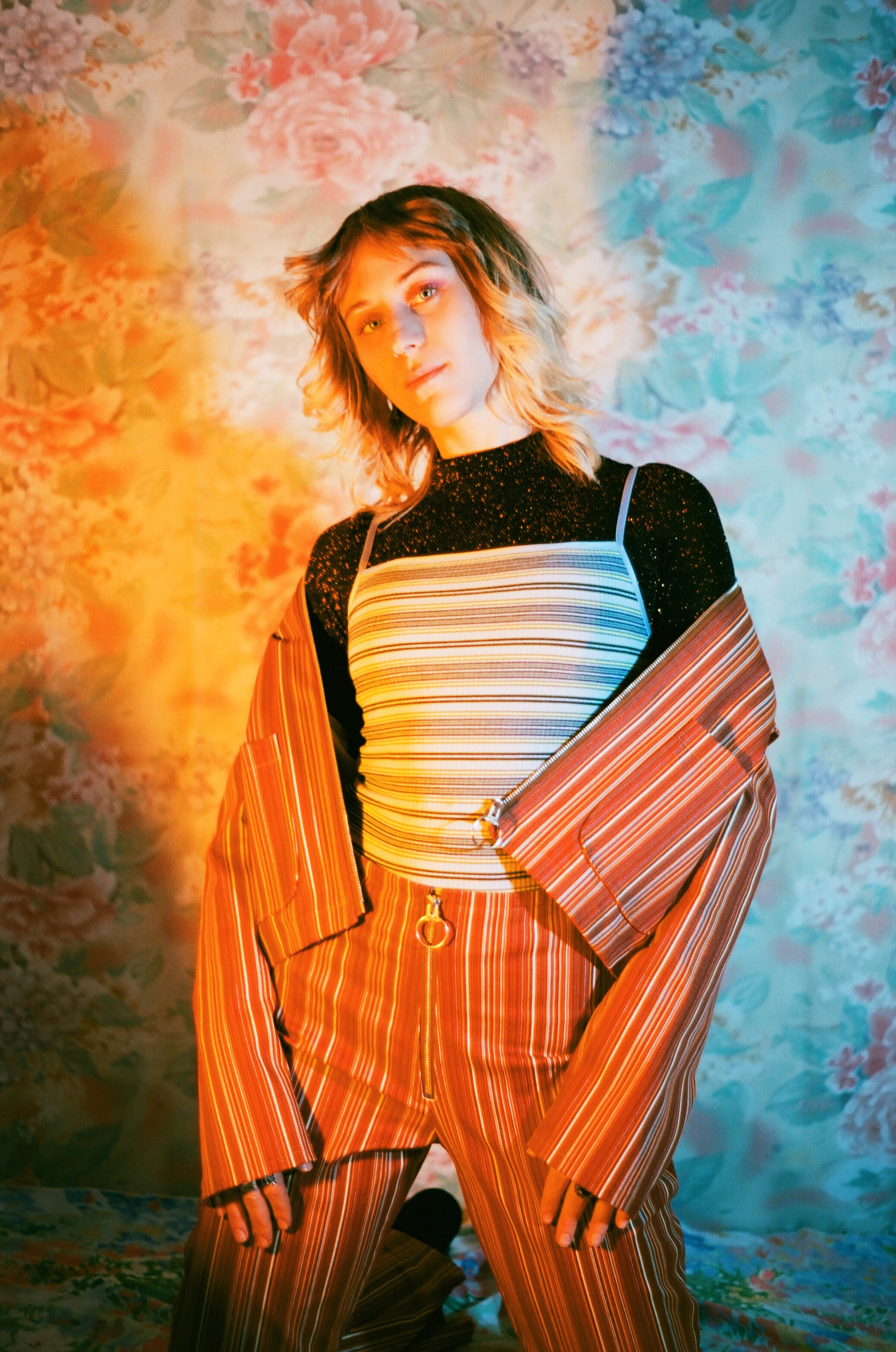Kue Varo: A Chat About Art, Community, and Reclaiming Self
Photo credit: Ariana Molly
Kue Varo (She/Her He/Him They/Them) is the solo project of songwriter and multi-instrumentalist Kat Spreen. After years playing in bands, Kue moved from Calgary to Montreal to find her own voice, looking inwards to explore the complexities of identity and self representation - uninhibited and all uniquely hers. The title of her debut album, Daffodil 11 - coming out on January 28th! - was inspired by Kurt Vonnegut’s Slapstick, the famous novelist’s exploration of the idea of building social support networks to counter the loneliness imposed by a capitalist world.
Also Cool got to chat with Kue about her sensitivity to color and light, her love of art, and her collaboration with Ariana Molly on the sultry music video for “Just Don’t Lie” - the first single off Daffodil 11.
Maya for Also Cool: Kue Varo - what does the name signify? How did this musical project come to be?
KV: Kue Varo is a gender ambiguous name which was on my radar because I perform in drag sometimes. I just wanted [a name] that wasn't super gendered. Kue is actually from Star Trek - the character Q - but I spell it with a “K” because my given name starts with it. I tried to keep that part uniform. I went by a different name in a project before this one, so I wanted a smooth transition - and for my fanbase to find me if they wanted to.
Varo is the last name of my favorite surrealist painter, so I borrowed from her name - Remedios Varo. She's had a really huge impact on me. I found her paintings one day - I just decided when I was like 12 or something that I needed a favorite painter - it was just really important to me.
I needed to know - who paints the things I really connect with? So I spent probably two weeks just Googling - going to online galleries all over the world and searching for someone who paints the way I like it. And I ended up finding one of Varo's paintings. I just instantly was like, "This is exactly what I love. This is what I would paint if I were a painter." So my love of her work still stands today. She had enough of an impact that I wanted to take on some of that - the energy that surrounds her art.
AC: Do you think that your painting reflects that as well?
Color is really, really important to me. I'm very sensitive to light in general - more so than most people. It can cause a lot of headaches, unfortunately, but because of it I can tell subtle differences in color really well. So in that respect, yes - I think we both share a love of rich, intense colors. I'm not a visual artist by trade, I do music. Painting is very much therapeutic for me - I don't have mad skills - I just love to do it.
I've been playing music [in front of other people] for about a decade. As a 20 year old I played in bands in my hometown and in a city just outside of Calgary. It was always with a bunch of guys - no shade to that - but I definitely let it stifle my creative voice in a lot of ways.
After years of dedicating myself to that project, I decided, along with a move to Montreal, that I wanted to find my own voice again, and really take the song writing part to heart. That's why I started playing music [in the first place]. When I was a kid, I learned piano not because I wanted to play piano, but because I wanted to write songs.
It was a huge missing piece and was making me really sad in ways that I didn't even realize. That's why this project exists. It's me reclaiming myself - as a voice and as a conduit to the creative forces that be. I don't take full credit for everything I write.
When things flow out of you, you're sort of taking from the collective conscious and you just get to be the translator, which is where your unique voice comes in.
AC: How did joining the Montreal DIY scene been for you creatively? In terms of possibilities for collaboration or any new influences you had during this time?
KV: The first bit was really hard because I didn't have any contacts when I first moved here. It was obviously a huge leap and didn't happen really quickly, but with the creation of this album I ended up meeting some other people who also came from Calgary. [One of them] happened to be working in a studio - Rena Kozak, the producer of the album. I hadn't worked with a female producer before, so I was really excited to collaborate with someone who wasn't a guy - for reasons like I mentioned before. I play music with a bunch of guys still, and I love them, but it's really nice just to have somebody else around. She really helped me get the most out of what I was doing.
Now I share a studio space, like a co-op studio space, with some people who run a label called Baby Horse Records. They're all friends of mine, they're all musicians, and they're all super talented.
I've been welcomed by two different groups and I'm very much in love with both of them - I'm very lucky. This is a really good time to ask me that question because I feel very full and accepted - and lucky.
AC: I've been like rethinking my relationships with people lately and have been really mindful and appreciative of the support and sense of community I feel.
I heard that the title of your album Daffodil 11 is from Vonnegut's Slapstick - which also ties into the whole idea of community building. Was that on your mind when you were writing the songs?
KV: Slapstick is my favorite book and Vonnegut is my favorite author. I've read almost all of his works and I'm trying to collect the last few books. Yeah, Slapstick was heavy on my mind. I actually have a tattoo that's also in part because of [that book]. It was the perfect thing for me to read when I started letting the voices of adulthood come in and say, "There needs to be a good outcome for a good deed to mean anything."
The idea of doing something fully and authentically, without attachment to the outcome - just because it's the decent human thing to do - really speaks to me. That was really heavy on my heart when I was making the album and is still. Hopefully it will be forever because I think it's an important virtue.
AC: You mentioned that you sometimes perform in drag and that you are gender fluid. Can you talk about expressing your identity as an artist - do your drag performances ever reflect your day-to-day experience?
KV: I flip-flop around, it so depends on how I feel when I wake up in the morning. Clothes are very important to me because they're me expressing myself and how I feel every day. I'm sure that I'm also really vain. I'm sure that's a thing too, but I like to think it's because I'm just an expressive person. So I'll just love myself - I'll keep that lie (laughs) .
I definitely have boy days and girl days and I think it's pretty obvious to anyone who's around me a lot - because my whole demeanor changes a little bit.
I like Carl Jung a lot because he also always speaks of having two sides to himself - the scientist and the spiritualist. There's always this duality within him and I've always felt that duality within myself. I grew up in a pretty religious setting that had some serious, hardcore gender roles imposed. So luckily my family is really cool and loving, but there's still a lot of me decluttering all those experiences.
I definitely take advantage of that in art because. I mean the best part about - well not the best part, but the best superficial part, I suppose - about being an artist is that you get to play dress-up and nobody really cares. Which, in Montreal, is not as big of a deal because people are very expressive with the way they dress anyway.
Coming from a super small, super conservative, really just prairie town Alberta, the whole idea of playing dress-up is a much bigger deal. I guess the duality is an everyday experience - and that's totally normal. In terms of dressing up in drag, it's only for performances, as like with who you are as an artist.
AC: You also introduced yourself as being neurodivergent - how do you think being on the spectrum enriches your experience and your expression of it? You said earlier that you're sensitive to light and see differences in colors very well. Musically, do you think there's also an expression of that?
KV: I think, because it's a processing difference, it would have to have some influence on how I'm going to output what I've processed. Also socially, I think. I'm quite good at pretending to be good at socializing now.
It's been 20-some years - it's been a long time and I didn't know what was up. I was a really late diagnosis. Having the ability to reframe my entire life with things that made sense was really awesome. Sensorily, being a musician can sometimes be a little tough. I have to know when my limits are coming because otherwise it's like, "time to go into a dark room for a while", but it must serve me in some way artistically. At least being a slightly different perspective is valuable. I think it would be impossible for literally how I experience the whole world not to change how I make art about it.
AC: The video that you made with Ariana is so amazing - what is the story behind the song "Just Don't Lie"?
KV: I have residual effects of being a super self-righteous person. In my youth I was really well-intentioned, but my intensity factor wase a bit much for a lot of people. This is also part of being on the spectrum - lying is typically really, really difficult to comprehend. I can't speak for everyone, but hearing from other people that I know are on the spectrum, lying [takes time to understand].
It's taken me until now to realize that small lies are okay and everybody does them. So the song is me poking fun at myself, my younger self, for being so adamant with what I expected from other people. That's why I say, "Forgive how intense I am, because I want it to be right."
AC: What about the video itself?
KV: It was a lot of fun to make. Ariana came up with pretty much all of it. I basically told her to just go crazy. I wanted to do something fun and she loved the song, so I just gave her free reign . All of it had themes that we both felt matched the song, so a lot of things happening and then happening in reverse. A lot of symbolism - like water and fire. We're both pretty into the subliminal power of symbolism. That's how it came to be - it's largely her. So I won't take credit.
AC: And the aesthetic? It's sultry, romantic - was that something you were going for initially?
KV: Yeah, that's part of my artist female persona. I describe it as my artist male persona being a cross between a 1960's bad-ass beat poet and a grungy nineties guy. And then my female persona is more of a sixties to seventies pop goddess, dream-girl type.
Written by Kue Varo (Katrina Spreen)
Produced, Recorded, Mixed by Rena Kozak
Bass: Rena Kozak
Drums: Chris Dadge
Synth: Scott Munro
Lead Guitar: Kue Varo
Rhythm Guitar: Matthew Spreen
Vocals: Kue Varo
Video: Ariana Molly
January 28th is the official album release day - it has taken almost two years!
Follow Kue Varo on Instagram
You can find the first single, "Just Don't Lie" on Spotify and everywhere else.






